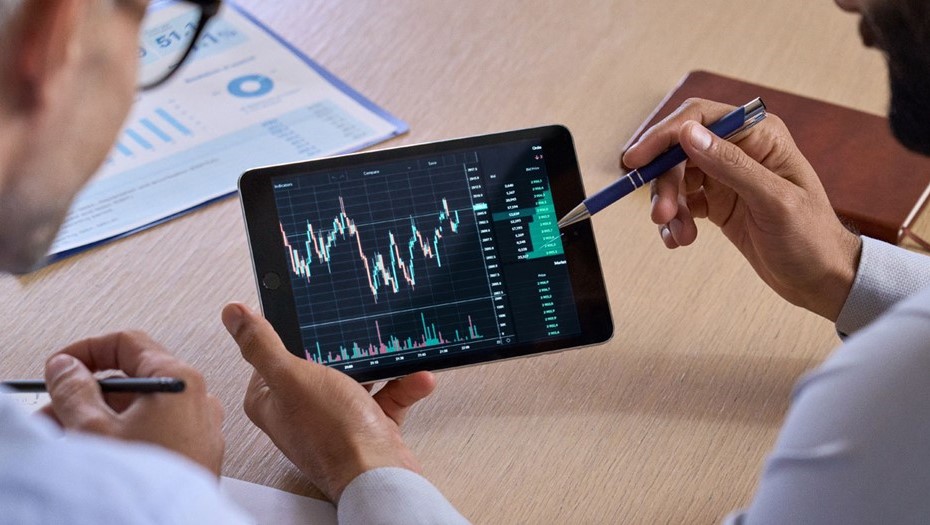How to Choose a Broker for Stock Trading
Main Takeaway: Choosing the right broker is the foundation of your success. It is essential to evaluate legal reliability, service costs, trading conditions, technical platforms, support quality, access to assets, and innovative services to form an effective and secure trading strategy.
1. Legal Safety and Licences
1.1 Importance of Licensing
The first step in selecting a broker is to check their licensing. Regulated brokers must adhere to the rules set by the Central Bank of Russia, the FCA (UK), the SEC (US), and other reliable authorities. A licence guarantees that the broker keeps client funds in separate accounts, complies with capital requirements, and undergoes regular audits. The process of verification is straightforward: visiting the regulator's website (cbr.ru, fca.org.uk) allows you to confirm the status and check for violations using either the firm's name or registration number. Lack of a licence is a significant red flag warranting withdrawal from cooperation.
1.2 Protection of Funds
Brokers with reliable regulators are required to insure client deposits through compensation funds. The FCA guarantees up to £85,000 in the event of bankruptcy, while SIPC in the US protects up to $500,000. This means that even if the broker fails financially, your funds are eligible for compensation. It is crucial to clarify what insurance policies and amount limitations apply to your chosen broker.
1.3 Examples of Major Licensed Brokers
IG Group has been operating since 1974 under FCA regulation, Saxo Bank holds licences in Denmark and Australia, Interactive Brokers is regulated by the SEC and CFTC in the US, while leading Russian firms such as Finam and BCS are overseen by the Central Bank of Russia. Their long-standing history and stable operations serve as the best proof of reliability for both large and small investors.
2. Trading Costs: Commissions and Spreads
2.1 Types of Commissions
Commissions can be variable (spread), fixed (a percentage of the turnover), or bundled (a package of services for a fee). On Forex, variable spreads are common starting from 0.1 pips with no commissions, while in stock trading, they typically range from 0.03% to 0.2% of turnover. Some brokers charge fees for deposits/withdrawals or inactivity. Compare the conditions of several candidates to choose the optimal balance between cost and execution quality.
2.2 Example of Cost Calculation
Suppose you execute 20 trades with a total value of $100,000. At a commission of 0.1%, your expenses would amount to $100. With a spread of 0.5 pips on EUR/USD, additional costs would be around $10-20. It’s important to consider daily swap charges for holding positions overnight, as well as potential subscription fees for exchange data.
2.3 Hidden Costs
Be mindful of currency conversion fees, charges for using VPS for uninterrupted operation of advisors, and commissions from partner brokers when copying signals. Such costs may sometimes exceed base commissions, significantly impacting the efficiency of your strategy.
3. Trading Conditions: Leverage, Margin, and Deposit
3.1 Leverage and Risk
Leverage increases potential profit but also elevates risk. In Forex, the standard ratio ranges from 1:100 to 1:500, while on the stock market it is typically between 1:5 and 1:20. Newcomers are advised to limit leverage to 1:10-1:20 and to carefully assess potential losses to avoid margin calls and forced closing of positions.
3.2 Minimum Deposit
The minimum deposit for Russian brokers typically starts from ₽10,000, while for international firms it ranges from $1 to $100. For testing strategies under real conditions, it is wise to choose low-threshold accounts, gradually increasing your capital as you gain confidence in working with the platform.
3.3 Examples of Optimal Conditions
Exness offers leverage up to 1:2000 with a minimum deposit of $1; however, it applies swaps and charges for data, which may not suit scalping. Saxo Bank requires a higher entry threshold of $10,000 and offers low spreads on stocks along with a comprehensive range of analytics. Finam operates with deposits starting from ₽50,000 and provides leverage of 1:20, granting access to both Russian and foreign markets.
4. Trading Platforms and Technologies
4.1 Features of Popular Terminals
MetaTrader 4 and 5 remain the standard due to their range of indicators, support for auto-trading via Expert Advisors, and integrated MQL. cTrader provides clearer order execution and first-class API capabilities. Proprietary web terminals of brokers often incorporate fundamental analytics, an economic calendar, and social trading functionalities.
4.2 Platform Evaluation Criteria
- Execution speed: fractions of a second are critical for scalping;
- Connection stability: absence of interruptions during high volatility hours;
- Functionality of mobile applications: comprehensive set of orders and analysis tools;
- Ability to test strategies on historical data;
- Availability of risk management tools (stop-loss, take-profit, trailing stop).
4.3 Automation and API
For algorithmic traders, having REST and FIX API is critical. Interactive Brokers and CQG provide API with minimal response times. Check if there are additional fees for API access and what request speed limitations may apply.
5. Customer Support and Education
5.1 Support Channels
24/5 or 24/7 support through phone, chat, and email in the native language is a mandatory criterion for urgent problem resolution. Evaluate average response times and the qualifications of staff based on feedback from colleagues and users.
5.2 Training and Analytics
Availability of webinars, video tutorials, trading signals, and market analysis reviews allows novices to quickly integrate into trading, while professionals can adapt their strategies. Firms such as IG, Saxo Bank, and Alpari offer free training courses and proprietary research.
5.3 Demo Account
A fully functional demo account with no expiration date and limitations on virtual balance helps test strategies without risk. Ensure that the demo conditions closely resemble real conditions—reflecting the same delays and swaps.
6. Access to Markets and Assets
6.1 Range of Instruments
Choose a broker that offers access to the asset classes you need: stocks (Russian and foreign), bonds, Forex, commodities, cryptocurrencies, and derivatives. Interactive Brokers provides access to 135 markets, while Finam is integrated with the Moscow Exchange and Nasdaq.
6.2 International and Local Venues
If you plan to trade on the NYSE, NASDAQ, LSE, HKEX, and others, opt for a multi-exchange broker with direct connections. This eliminates extra intermediary commissions and speeds up order execution.
6.3 Specialized Brokers
- XM: Focus on Forex and CFDs, offering over 1,000 instruments;
- Kapital.kz: Access to the shares of Russian and European companies;
- Binance: Global cryptocurrency exchange with P2P trading and staking;
- Huobi: Wide selection of altcoins and cryptocurrency derivatives.
7. Reliability, Reputation, and Reviews
7.1 History and Market Share
Investigate how many years the broker has been in operation, their market share, and financial reporting. Industry leaders are companies with a history of over 10 years and transparent capital management.
7.2 Trader Reviews
Platforms such as Trustpilot, Forex Peace Army, and local forums contain feedback from real users. Pay attention to complaints regarding fund withdrawals, technical failures, and the quality of training—these parameters are critical.
7.3 Ratings and Awards
Annual ratings by Global Finance, FX Empire, and InvestMoney help identify the best brokers in categories such as "commissions," "technology," and "service." A broker's presence on such lists is a strong indicator of quality.
8. Additional Services and Innovations
8.1 Social Trading and PAMM Accounts
Social trading platforms (eToro, ZuluTrade) allow users to copy the trades of successful traders, while PAMM accounts provide an opportunity to invest in the management of professionals, distributing profits proportionally to contributions.
8.2 Auto-Trading and Trading Robots
The use of Expert Advisors in MT4/MT5 or third-party robots via API ensures trade execution without emotional influence. When choosing, ensure that the broker permits the use of advisors and offers necessary tools for optimizing strategies.
8.3 Analytical Platforms and API
Some brokers provide professional analytical panels from Bloomberg, Refinitiv, or TradingView, as well as APIs for quotes and order management. This is critical for professional traders and algorithmic strategies.
In Conclusion: Choosing a broker requires thorough research and testing. Verify licences, compare commissions and conditions, test the platform on a demo account, and analyse feedback and ratings. A wide range of assets, a user-friendly interface, and innovative services will help create a reliable environment for successful trading and investing.




